Resources
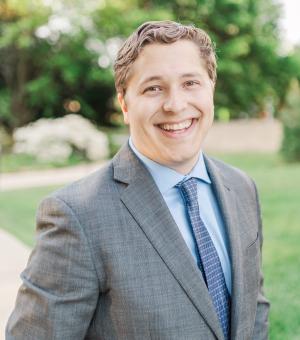
Abstract: This is the second part of a collection of poems showcasing the personal exploration of a teaching identity grounded in grief experiences, one of the aspects of identity educators carry into the classroom. The use of poetry permits an open theological exploration in which the author examines aspects of his life through the lens of religious allusions and imagery including the creation narratives, Cain and Abel, and Hannah. Specifically, the author engages the experience of growing up in a family impacted by the death of his brother who died prior to the author’s own birth. The experience of being a “substitute” and a “teacher” is represented within the poetry. The series begins with childhood encounters with loss and moves through life and teaching experiences marked by grief. Good and Evil: The Second Account of Creation When I first learned there were two accounts of creation, I was confused. Then, I was delighted. Maybe this one made more sense. I can’t remember if this optimism was a default disposition or a performance to please. Now it’s both. In the day that the Lord God made my family, no ambition was yet in my mind and no anxiety had yet sprung up– for I didn’t yet know what those words meant, and there was no teacher there to help. But a sinkhole would envelop the earth, and I couldn’t breathe enough to cry– Then the Lord God formed my faith from the ashes of the dead, and breathed into my nostrils the breath of new life, and I became a living being, well, living enough. And like Adam, such a miraculous origin story couldn’t keep me from ruining everything. But the Lord God kept busy, planting gardens and putting people in them. So I likewise kept busy, making more work for myself, too: a research agenda. I was never good at gardening, so when God went east to garden, I went west for my formation. Fortunately, God was there, too. I tried to be pleasant and good, like the trees and those worthy of affection, but the tree of knowledge always seemed more appealing to me than the tree of life. That’s why I ended up in graduate school— the rivers’ pull stronger than I expected. Now I teach ethics to teenagers and wonder if any of us were supposed to know the difference between good and evil in the beginning. The Ordination to the Professoriate The Lord closed Hannah’s womb, and her rival mocked her. Hannah wept and wouldn’t eat. My parents wept but couldn’t stop eating. Hannah made a deal with God: “If you give me a boy, then he will be yours.” Dad told me his deal was the same. Eli said she was drunk, though she was intoxicated only by despair. I still shiver thinking of the time he was both. Sure enough, Samuel was born. And soon they ordained Hannah’s grief. Grief– the great teacher. Samuel and I – bargaining chips for the divine. What will they do when they find out they hired Anxiety disguised as achievement? Anxiety with a capital A. Untenable seeking tenure-track. Ordination is supposed to be a reordering, and I was always great at following orders, so it seemed a bit inevitable. Hannah dropped Samuel off with the priest, and the bus dropped me off at the megachurch. “Here I am,” we both muttered.

Abstract: This is the first part of a collection of poems showcasing the personal exploration of a teaching identity grounded in grief experiences, one of the aspects of identity educators carry into the classroom. The use of poetry permits an open theological exploration in which the author examines aspects of his life through the lens of religious allusions and imagery including the creation narratives, Cain and Abel, and Hannah. Specifically, the author engages the experience of growing up in a family impacted by the death of his brother who died prior to the author’s own birth. The experience of being a “substitute” and a “teacher” is represented within the poetry. The series begins with childhood encounters with loss and moves through life and teaching experiences marked by grief. In the Beginning: The First Account of Creation Orientation: As the students and their families file into a multipurpose room somehow simultaneously drab and new, I allow my mind to wonder about the myths these students carry about their families’ creation. Without meaning to, my mind falls backward, remembering how in the beginning, when God created my family, I must’ve been somewhere in the formless void as darkness began to cover the face of my parents, while a wind of grief swept over the face of my community. I recall the darkness hiding them on his birthday, the anniversary of his death, and the holidays. I wish there weren't so many holidays. Then the great Teacher said, “Let there be Zachary,” and there I was. And I saw that I was supposed to be good, and so I separated myself from the darkness… or at least, I tried. My teachers loved how hard I tried. I called the light ours, and I called the darkness mine. And there was anxiety, and there was laughter: my childhood. I come to my senses. Anxiety and laughter linger as I pick up the microphone and welcome my new students to the end of their childhoods. “Today is the beginning…” Accidental Cain Reading my course evaluations, I realize I may be too sensitive. “This reading was impossible.” one student wrote. “Literally impossible.” I begin my investigation and piece together the evidence for why my textual selections missed the mark. But then I get lost in another long-winded lecture to an audience of one, thinking about how we are here, together, right now, on this floating rock, in outer space, something that’s always seemed impossible to me. Literally impossible. Why am I here? It’s impossible that I killed my brother. I was born two years after he died. Literally impossible. Yet until the age of twelve I asked myself the questions the Lord asked Cain, “Where is your brother?” “What have you done?” I listened, and I heard my brother’s blood crying out from the ground. It was sad music that I could barely hear, but it left a ringing in my ear. So I became a wonder-er and a wanderer, and I made my way to the land of Nod, east of Eden, But even after I turned twelve, and then seventeen, and then thirty the ringing never went away. I was too scared to ask to watch the home movies so I could know what he sounded like. I wondered what his embrace would feel like– would he have been the kind of big brother that hugged his baby brother, or would he have withheld his affection to toughen me up? Maybe I wouldn’t have been so sensitive, then. I pictured the car crashing again and again. Did he die upon impact? Did he know he was dying? Was there part of him that ever wanted to die? Mom wanted to die, so maybe that’s why she loves him so much. Maybe they had that in common. I don’t think we’d have much in common at all. An unnecessary worry, but such worries are my currency. Why wouldn’t God just accept Cain’s sacrifice? Maybe Cain was too sensitive, too. Maybe I’ll find a video for next semester. Sonny In moments of solitude, I stare intently at the strange wooden case of what’s left of your life, a child playing secret agent, but feeling like a detective who is also the lead suspect. I examine the trophies and books and what I think is your wallet, with a note your teacher confiscated. You never were a fan of teachers, Dad said. I’m too afraid to open the case. I’m as trapped as your belongings: a carefully curated catastrophe. Now you show up in dreams and nightmares, and people chase you But you shush them, or you turn to mist. And I sit in a strange kind of envy, an outsider among those who miss Sonny.
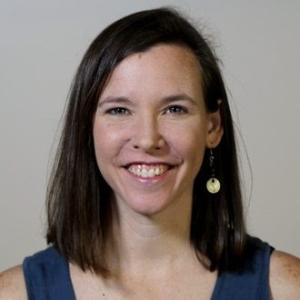
I was born and grew up in the hills of east Tennessee, in the Appalachian region of the United States. As a child, I didn’t realize that where I lived had a reputation in other parts of the country. I also didn’t know that I had an exceptionally strong Southern accent until I was in college. When I decided to pursue academia, I worried that my accent would lead others to think that I did not belong in graduate school. I began to attempt to erase my accent, especially during classes or when speaking to a professor. Before giving my very first paper at a conference, I practiced over and over again to be sure that I sounded “smart” and “professional.” It was becoming clear that, to many people, “Southern” and “smart” were not synonymous. When I moved to the “north” (New Jersey) for my doctoral studies, these fears increased. I worked to prove that I was smart and capable, which meant that I attempted to hide my accent, even though it wasn’t as strong as when I was younger. Even with all of my work and practice, it occasionally slipped through and inevitably someone would comment on it. Through reading and reflection, I now realize this struggle with my accent was connected to my background and, further, my class. While many of my fellow students seemed to understand academia instinctively, I struggled to grasp it. This imposter syndrome affected me in numerous ways, especially in graduate school. Even when I had a question or a comment, I was nervous to speak. Insecurity infiltrated my body; I would wring my hands under my desk, cross and uncross my legs. When I finally found the courage to speak, my face would redden with every word. While I have worked to overcome these feelings and now can speak in academic settings, I still vividly recall my embodied experiences as a woman from Appalachia navigating academia. A number of scholars have written about class as it relates to the academy and the classroom.[1] For example, Stephanie Moynagh writes about the ways that class affects embodiment. She observes: Embodied experience varies widely, always shaped by the pervasive impacts of power structures that affect different bodies in different ways. Making sense of our somatic experience is also influenced by cultural discourse and by the limitations of cognitive processes of understanding. . . Membership in identity categories such as working-class, working-poor, poverty-class, low-income, or cash-poor is also confusing because class-based experience and identity can shift dramatically over time.[2] These observations resonate with my own experience in academia, a space that I continue to carefully navigate based on my background. My embodied experience also affects my pedagogical approach to the classroom. I remember vividly how it felt to enter a university classroom and feel out of place, confused at some of the language being used, and worried to contribute to a class discussion. I now recognize that my experiences navigating the academy help me to be a better teacher and guide for my students.[3] While my southern accent is now (mostly) hidden, I do not enter the classroom assuming that everyone understands terminology. Instead, I define words and set expectations clearly from the first day of class. As Moynagh argues, “All learning environments, both formal and informal, need to make meaningful space for nondominant ways of knowing and relating to the world.”[4] For this reason, I also offer a variety of ways that students can participate in the class. Instead of only acknowledging vocal contributions or sophisticated vocabulary, I encourage silent reflection and journaling. Similarly, offering creative assignments within the classroom is a strategy that can help to ease the tension for students who are less familiar with academic writing. I use storytelling often as a teaching strategy. Storytelling is popular in Appalachia, where we hear stories from our parents, grandparents, and even our neighbors. When possible, I take the students outside or arrange chairs in a circle as I tell a story, usually a biblical or historical one (because of the courses that I teach). I have found that students remember these stories later into the semester. In these ways, my geographical background becomes a way that I mentor and encourage students. I now acknowledge my Appalachian background when possible and attempt to dismantle harmful assumptions about geography and class. [1] bell hooks, Where We Stand: Class Matters (New York: Routledge, 2000); Matt Brim, Poor Queer Studies: Confronting Elitism in the University (Durham: Duke University Press, 2020). [2] Stephanie Moynagh, “Class and Embodment: Making Space for Complex Capacity,” in Sharing Breath: Embodied Learning and Decolonization, ed. Sheila Batacharya and Yuk-Lin Renita Wong (Edmonton: AU Press, 2018), 356. [3] For an example of the ways sharing our own experiences can positively affect student learning, see: Phil Bratta, “Relating Our Experiences: The Practice of Positionality Stories in Student-Centered Pedagogy,” College Composition and Communication, January 1, 2019, https://www.academia.edu/43453027/Relating_Our_Experiences_The_Practice_of_Positionality_Stories_in_Student_Centered_Pedagogy. [4] Moynagh, “Class and Embodment: Making Space for Complex Capacity,” 365.
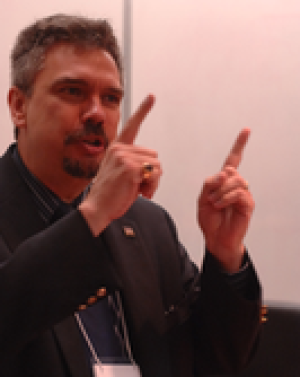
Remember the composition of religion departments back during the 1960s? They predominately and unapologetically consisted of white males – especially the so-called Ivies. Now imagine if one of these schools, realizing the need for different perspectives, decided that they wanted to have a feminist viewpoint taught in their department. A search committee would be formed, advertisements placed, interviews conducted, and after an academic year of deliberation, the most qualified candidate would be hired – probably a white man whose Ph.D. dissertation somewhat dealt with a few aspects concerning women’s issues. Even though several women steeped in feminist thought applied for the position, it would not be too surprising if a man would have been hired. So, allow me to rephrase my question: Can a man teach Women’s Studies? If identity does not matter as to who teaches racial/ethnic-based courses, then does gender matter? Maybe the question is not can but should. If we ask can, then the answer is obviously yes. Just like men can become proficient in feminist studies, so can whites become proficient in Latinx studies. And frankly, I cannot imagine any professor, regardless of ethnicity, race, or gender who can be considered scholastically rigorous if they fail to include these voices on a regular basis in every course they teach. For the record, in every one of my classes - except one (Formative White Male Ethicists) - I can and I do teach perspectives which focus on feminism, womanism, Black, Asian-American, Indigenous, and LGBTIQ religious thought. So if the question is can, then the answer is not only yes – but failure to do so indicates a lowering of academic standards. And yet, we face a situation where white people shamelessly apply to teach Latinx Studies simply because they can – or think they can. And like in the 60s, they are the ones who make ideal candidates in schools lacking the presence of Latinx. Latinx remains the largest ethnic/racial group in this country most underrepresented on Religion faculties. Ethnic discrimination against Latinxs is so prevalent that when a search is announced, the department hopes to find the brownest face with the whitest voice – or better yet, another white face who can appropriate our contributions to the discourse. While there are institutions who see the value of hiring a Latinx who will challenge their worldviews, and those of their predominately white students, to the core, most hope to find a Latinx who is not so damned angry. Of course, what they fail to realize is that if the teaching and views of Latinx scholars do not anger, do not challenge, do not disrupt, then they have indeed found the most assimilated brown face, which is of no use to nuestra comunidad. Such a hire is like pouring hot sauce onto a sloppy joe and calling it chili con carne. Should whites teach Latinx studies? The can question is answered in the affirmative because all scholars are responsible to include marginalized voices in their courses. But the should question is quite different. While the can question is about inclusion, the should question is about exclusion – excluding Latinx voices and bodies from white classrooms and institutions. During the 1960s, male-only teaching faculty needed the voices of women (and still do); but just as importantly, they also needed their presence as professors. Such institutions were as academically deficient then as those today lacking professors who are Latinxs (and by Latinx I mean those teaching teaching and focusing their works on the scholars from nuestra América – not the assimilated ones who teach white theology with a “spicy pepper” thrown on top). So, should whites teach Latinx Studies? No. Better yet – Hell no. There is a major difference between including the voices of Latinx scholars within everything you teach, and applying and being hired to teach exclusively in their place (regardless of whether you can or cannot). And shame on those institutions who continue to play games by making sure our radical and revolutionary voices do not, and potentially never will, sully their lily white halls by instead choosing whites, or Latinx in name only, to continue white theological hegemony in our classrooms.
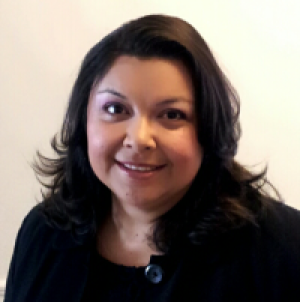
In 2015, the Department of Education reported that 1 in 5 women in the US is Latina. By 2060, this number is projected to be about 1 in 3 women. As a Latina, I was surprised by these numbers because I did not expect the current Latina population to be near 20% of the entire US female population and over 10% of the entire US population![1] In 2010 and 2015, 50.8% of the population in the US was female.[2] That means that over 10% of the entire US population is Latina and that percentage could be around 18% in 2060 if the projection is correct and the male/female ratio remains the same in the US.[3] But I was also alarmed by these numbers. Why? Because of other statistics about this population: While Latinas earn more bachelor’s degrees than their male counterparts, they still earn less than these men in the labor market. (Latinas earn only 56 cents on the dollar in comparison to Anglo/Euro-American males.)[4] About 33% of Latinas become pregnant by the age of 20.[5] Latinoa teens have consistently higher suicide rates than their black and white counterparts - 18.9% have seriously considered attempting suicide; 15.7% have made a plan about how they would attempt suicide; 11.3% have attempted suicide.[6] What does this have to do with teaching, religion, and politics? Well, if Latinas account for over 10% of the US population, and 60% of the Latinoa population[7] are citizens of the US, then we are saying that at least 6% of US citizens are Latinoa. Yet, I find few syllabi or resources at the university and seminary-level that are engaging issues of concern for Latinas. The dearth is especially obvious in general education courses. This is significant because misperceptions of Latinas leads large numbers of US citizens to think that the majority of Latinas are not citizens and should be, depending on one’s political affiliations, treated accordingly. Many of my students in the Midwest have lived without engaging the Latinoa population and I have found in my teaching at the University of Dayton, and other institutions, that they do not know about the complex and varied realities of Latina life in the US. When I share with them that most Latinas are born citizens or born to citizen parents and then naturalized, students have told me that they thought most Latinas came to this country by crossing the Mexico/US border on rafts. I am concerned that talk of sanctuary spaces in response to statements made by the President-Elect will focus student attention on creating these sanctuary spaces with little regard to either the diversity of Latina life or the social issues which affect them. In other words, sanctuary spaces are not enough for us to fix the social ills of the pueblo. Our systems of education do not help to make these connections either. But, I believe we religion scholars have a special role to play in teaching and learning with and about Latinas.I am listing some resources below to start the discussion about this topic. What other resources do you know/have you used to teach with and about Latinas? Resources Ada María Isasi-Díaz. Mujerista Theology. Maryknoll, NY: Orbis Books, 1996. Jacqueline Hidalgo. Revelation in Aztlán: Scriptures, Utopias, and the Chicano Movement. London, UK: Palgrave Macmillan, 2016. Lara Medina. "Nepantla Spirituality: An Emancipative Vision for Inclusion" in Wading Through Many Voices (2011). Latinitas – www.laslatinitas.com – This Texas-based organization empowers young Latinas through media and technology to become strong and confident leaders. Maria Pilar Aquino, Daisy L. Machado, & Jeanette Rodrguez. A Reader in Latina Feminist Theology. Austin, TX: University of Texas Press, 2002. Various authors in Orlando O. Espín. The Wiley-Blackwell Companion to Latino/a Theology. Hoboken: NJ, 2015. [1] [2] [4] http://www.nationalpartnership.org/research-library/workplace-fairness/fair-pay/latinas-wage-gap.pdf [5] https://www.cdc.gov/nchs/products/databriefs/db136.htm [6] [7] http://www.politifact.com/punditfact/statements/2015/jul/29/jose-diaz-balart/majority-hispanic-population-us-born-says-jose-dia/; http://factfinder.census.gov/faces/nav/jsf/pages/index.xhtml
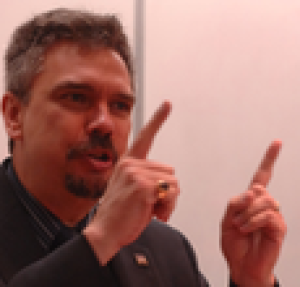
Miguel A. De La Torre, Ph.D. Professor of Social Ethics and Latino/a Studies Iliff School of Theology While teaching at the University of Johannesburg in South Africa, I was traveling with a local colleague to an engagement. Along the way, I ribbed him concerning some native cultural idiosyncrasy; at which point he turned to me in jest calling me “just another imperial gringo.” Although a humorous retort in our banter, I confess that I was taken aback. Of all the things I have been called throughout my life, this was the very first time I was ever called a gringo.... Read